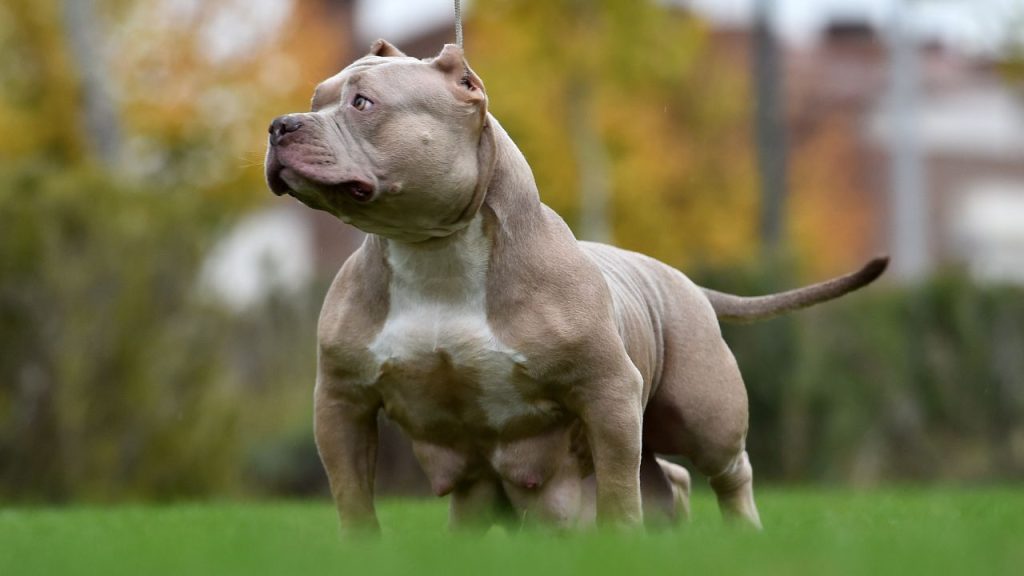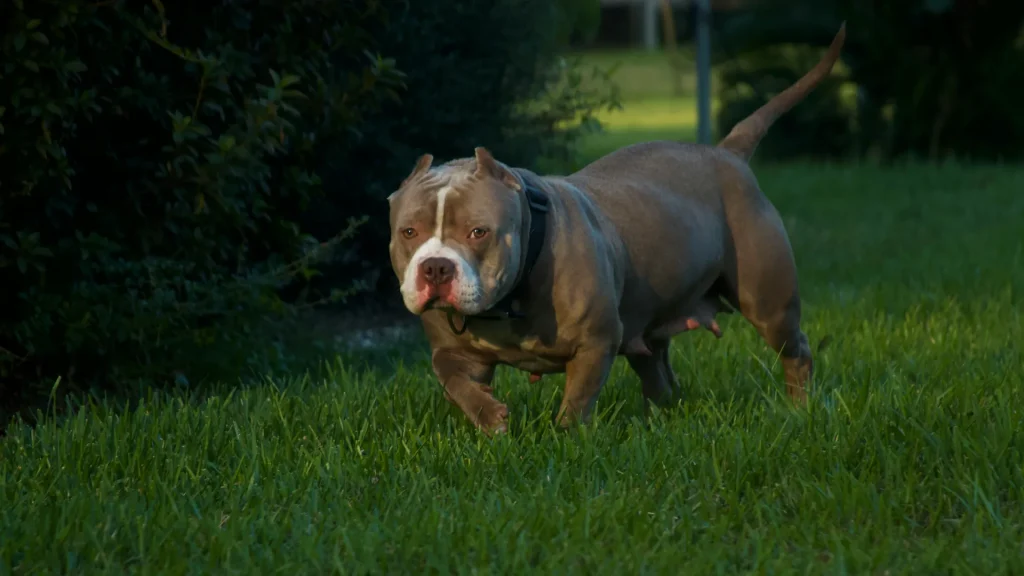A Breed Born for Companionship
The American Bully may look imposing, but it was designed first and foremost as a companion. Developed in the late 1980s and 1990s, breeders combined American Pit Bull Terriers, American Staffordshire Terriers, and bulldog-type breeds to create a dog with the strength and athleticism of its ancestors but with a calmer, family-friendly temperament. In 2004, the American Bully Kennel Club (ABKC) formally recognized the breed, followed by the United Kennel Club (UKC) in 2013.
While the AKC does not recognize the breed, the American Bully has flourished under the ABKC’s classification system, which includes four sizes: Pocket, Classic, Standard, and XL. Of these, the XL variety stands apart for its commanding size and presence.
The XL Difference: Size and Build
The XL Bully is essentially the big sibling of the Standard. Males typically measure between 20 and 23 inches at the shoulder, while females stand around 19 to 22 inches. Despite their added height, XL Bullies maintain the same broad chest, powerful muscles, and blocky head that define the breed.
Weighing anywhere from 80 to 130 pounds, they carry themselves with a mix of strength and balance. Their short, glossy coats come in nearly every color, including merle, often accented by white chest markings. Though massive, their appearance is more about sturdiness and presence than aggression.
Gentle Giants at Heart
Behind the muscular frame lies a surprisingly affectionate temperament. Breed standards emphasize that aggression toward humans is a disqualifying trait. XL Bullies are known for their loyalty, intelligence, and patience, especially around children. With proper socialization, they can live harmoniously with other pets and quickly become beloved family members.
That said, their size means they require experienced owners. Consistent training, early socialization, and firm but gentle leadership help ensure they grow into the well-mannered companions they’re meant to be.
Daily Life with an XL Bully
Owning an XL Bully means embracing an active lifestyle. They need at least an hour of daily exercise, whether through long walks, structured play, or agility training. Mental stimulation is equally important, as these intelligent dogs thrive on challenges.
Although they can adapt to indoor living, they do best in homes with space to stretch out. Families who enjoy outdoor activities often find that an XL Bully is the perfect partner, eager to join in the fun.
Health Considerations
Like many large breeds, XL Bullies face certain health risks. Hip dysplasia, congenital heart conditions, and thyroid problems are concerns noted by veterinarians. Their short muzzles can also lead to breathing issues, particularly in hot weather. Skin problems such as eczema and hotspots, as well as eye conditions like cherry eye, may appear in some lines.
Responsible breeders screen for these issues, and proactive owners can extend their dog’s healthy years through regular vet visits, proper diet, and maintaining a healthy weight. Life expectancy typically ranges from 10 to 13 years.
The Rising Popularity-and Responsibility
Social media has propelled the XL Bully into the spotlight. Their striking looks and affectionate nature have made them highly sought-after, with puppies often commanding premium prices. But popularity has also brought challenges. Public perception can swing negative, and in some regions, laws now restrict or even ban ownership of XL Bullies. Prospective owners should always check local regulations before bringing one home.
Why Families Love Them
At their best, XL Bullies embody the phrase “gentle giant.” They are protective without being aggressive, loyal without being clingy, and affectionate without losing their confident, bold demeanor. For families willing to invest time in training, exercise, and care, an XL Bully offers not just a pet but a steadfast companion.


